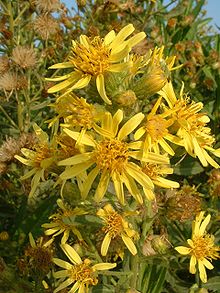Seny
 From Wikipedia - Reading time: 8 min
From Wikipedia - Reading time: 8 min
Seny (Eastern Catalan: [ˈsɛɲ]; from Proto-Germanic *sinnaz) is a form of ancestral Catalan wisdom or sensibleness. It involves well-pondered perception of situations, level-headedness, awareness, integrity, and right action: "a kind of refined good sense and self-realization."[1]
The opposite of seny is known as rauxa (pronounced [ˈrawʃə]) "impetuosity or capriciousness".[2]
Cultural significance
[edit]
Many Catalans consider seny something unique to their culture, a true Catalan symbol. Seny as a particular characteristic of Catalan society is based on a set of ancestral local customs stemming from the scale of values and social norms of traditional Catalan rural society. The values of seny were transmitted from generation to generation without much change by the exemplary behaviour of the elder members of the family, as well as in the form of aphorisms and moral stories. The latter were largely based on Christian values and their examples and illustrations often included animals and plants that were common in rural Catalonia.
This oral lore caught the attention of Josep Torras i Bages, bishop of Vic, at the end of the 19th century.[3] He became interested in how seny was transmitted from one generation to the next as an oral tradition. He encouraged the writer Josep Abril i Virgili (1869–1918) to gather the moral stories and illustrate them in a book that was published as Bon seny ("Good sense"). This more-or-less representative compilation of moral lessons regarding seny was illustrated by artist Joan Junceda (1881–1948).[4] Published in the Catalan language before the Spanish Civil War, Bon seny became rare under General Francisco Franco, when so much Catalan printed material had been burned and printing in Catalan was severely restricted.
Many of the seny proverbs that defined traditional Catalan values have lost most of their meaning. The reason is the erosion of Christian values as fundamental in today's post-Christian Catalan society, which now sees itself as based largely on secular principles.
Seny is mentioned in the motto of castells, the Catalan tradition of building human towers, as one of the values of that endeavour: Força, equilibri, valor, i seny (strength, balance, courage, and seny).
Examples
[edit]
Many of the seny aphorisms are short:
Tenen els plaers de la vida, |
The pleasures of life have, |
L'home avar és com el porc, |
The tight-fisted man is like a pig, |
No vos 'nemoreu, amor, |
My dear one, don't fall in love |
Home pelut, |
A hairy man, |
The following story, La rata magra or La rata engarjolada, illustrates the dangers of greed:

Rata magra veu l'ocell, |
The lean rat sees the bird |
See also
[edit]- Josep Torras i Bages
- Reasonable person and moron in a hurry, legal concepts
- Sisu, a Finnish word meaning inner strength
Bibliography
[edit]- Ausiàs March, Plena de Seny.
- Cerverí de Girona, Obra moral; Oració de tot dia; Mal dit ben dit; Testament; La faula del rossinyol; sermó; proverbis.
- Jaume Raventós, Proses de bon seny, morals i socials. "Foment de pietat catalana". Barcelona 1923 (4 volumes)
- Josep Maria Folch i Torres, Historietes exemplars, Barcelona 1938 (10 volumes). Reed. Editorial Balmes, 1984.
- Gaziel, Seny, treball i llibertat. 1963
References
[edit]- ^ Kostyal, K.M. (2001). National Geographic People of the World. National Geographic. p. 181. ISBN 0-7922-6401-0.
- ^ "rauxa". Institut d'Estudis Catalans (in Catalan).
Determinació sobtada, pensada capriciosa.
- ^ Torras i Bages, Josep (1892). La tradició catalana.
- ^ "Joan Junceda". l'Enciclopèdia. Archived from the original on 2012-02-19.
 KSF
KSF